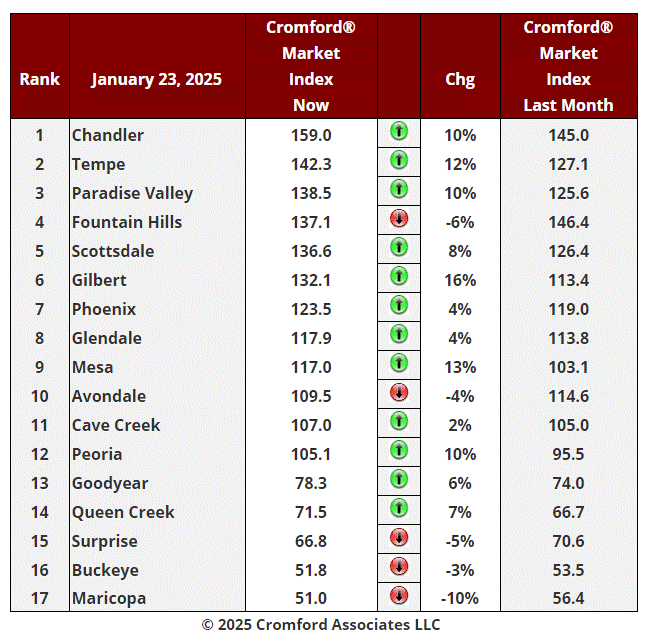Maricopa County New Home Market Slows in 2025 Amid Tariffs, Labor Shortages, and Policy Pressures



The new home market in Maricopa County has seen a notable decline over the past six months, as evidenced by monthly affidavit counts. New homes have steadily lost market share to re-sales, dropping from 28% in December 2023 to 24% in December 2024. This shift suggests a weakening demand for new homes and a growing preference among buyers for existing properties. Builders appear to be scaling back their production plans in response to this trend. For instance, the number of permits issued for new construction in Maricopa and Pinal counties in December 2024 fell to 1,653, the lowest since February 2023, and a significant drop from the 2,095 permits issued in December 2023.
This slowdown in production may stem from both market forces and new government policies that pose challenges to developers. Two key factors are higher tariffs on imported materials and stricter enforcement against undocumented workers. The tariffs increase costs for builders, whether they opt for more expensive American-made materials or pay the tariffs on foreign-sourced supplies. Additionally, Arizona's construction industry relies heavily on undocumented workers, with an estimated 34,000 currently employed. Many of these workers possess critical skills that are hard to replace. If deportation efforts escalate, the resulting labor shortages could extend construction timelines and further constrain the supply of new homes. Homebuilders have raised alarms about these challenges, warning that there are not enough citizens or legal immigrants to fill the labor gap.
The broader implications for the housing market depend on the balance between supply and demand. Home prices are not directly tied to construction or land costs but are driven by overall market dynamics. If higher costs force homebuilders to slow production and reduce new home availability, existing home sellers may benefit from reduced competition, potentially driving up resale prices. Rising prices could eventually make it more viable for builders to compete, despite higher costs, leading to a cyclical adjustment in the market. However, if stricter immigration enforcement significantly reduces Arizona's population, it could dampen housing demand, reversing this upward price trend.
A dramatic reduction in undocumented residents could have profound implications for Arizona’s housing market. With an estimated 350,000 to 400,000 undocumented immigrants residing in the state, their deportation would create a significant drop in demand for housing. To put this in perspective, these numbers are larger than the entire population of cities like Chandler or Scottsdale. While such a scenario may seem extreme, it underscores the importance of population trends in shaping housing demand. Past deportation rates, including the fiscal year 2024 total of 271,000 nationwide, suggest that mass deportations are unlikely to occur rapidly. However, with population growth or decline being a fundamental factor in housing dynamics, these developments warrant close attention as they could significantly influence future market conditions.
“I never dreamed about success. I worked for it.”
—Estée Lauder
Have a great week everyone!
Recent Posts











"My job is to find and attract mastery-based agents to the office, protect the culture, and make sure everyone is happy! "
